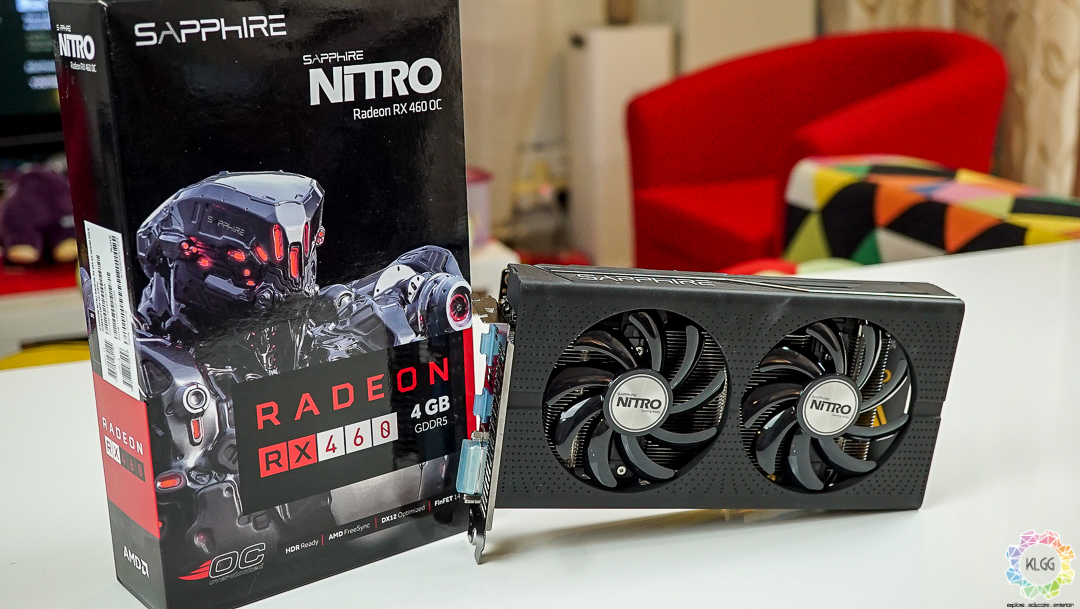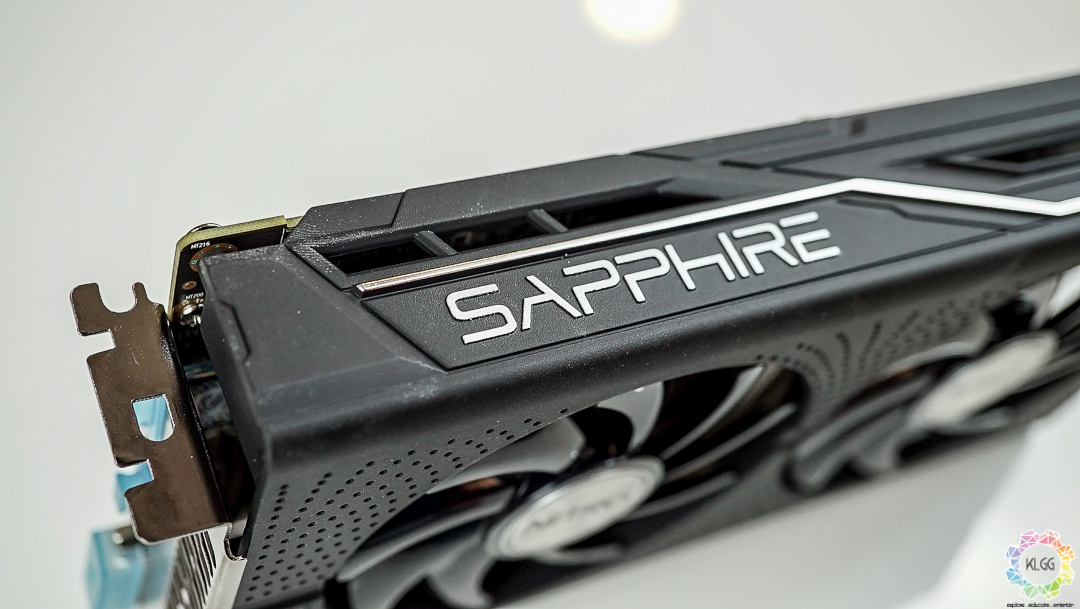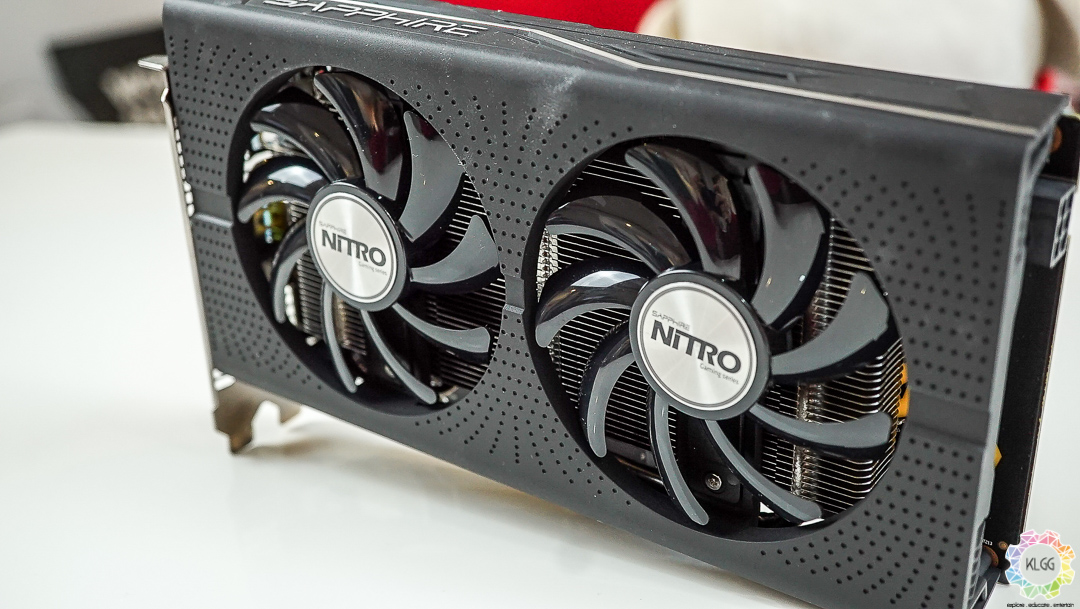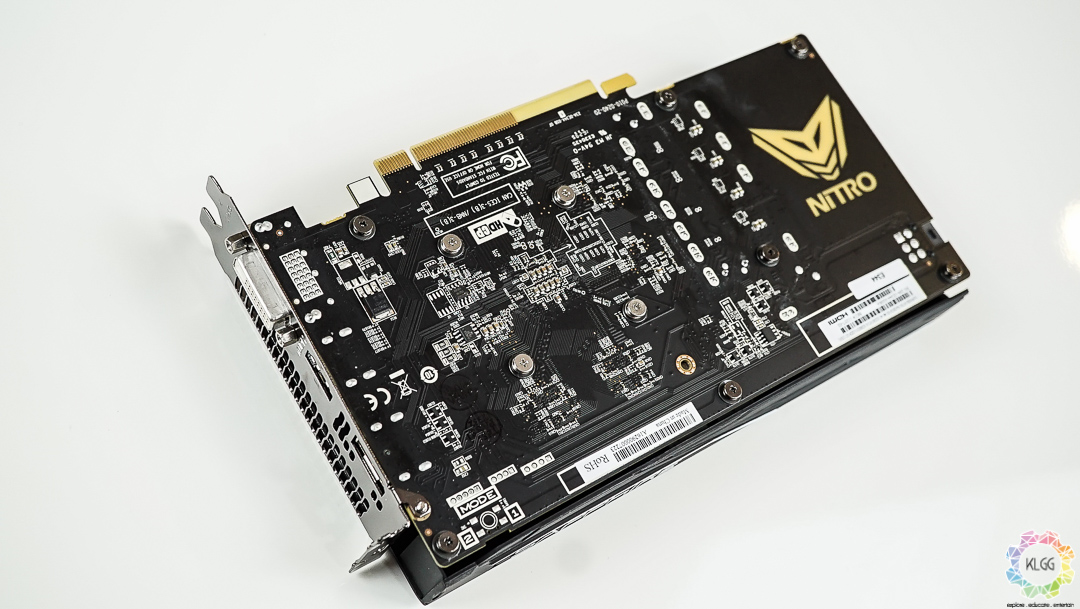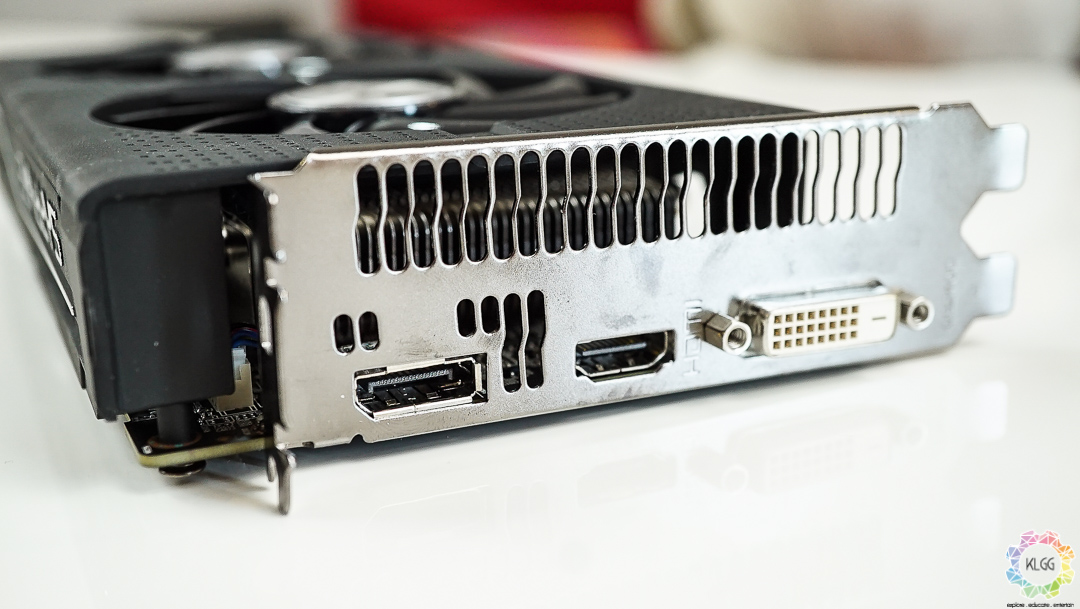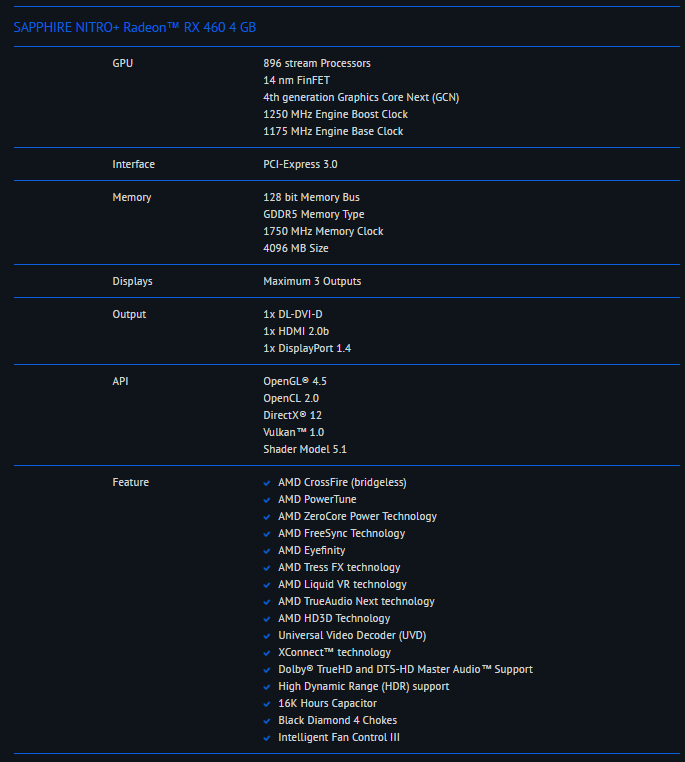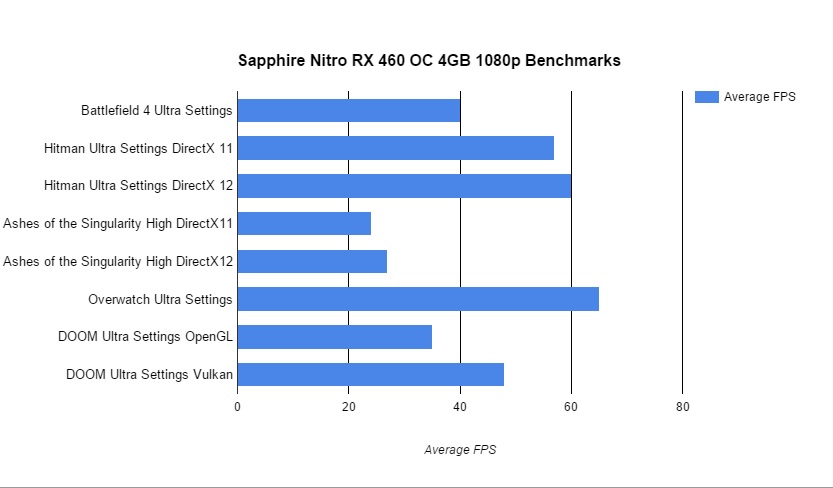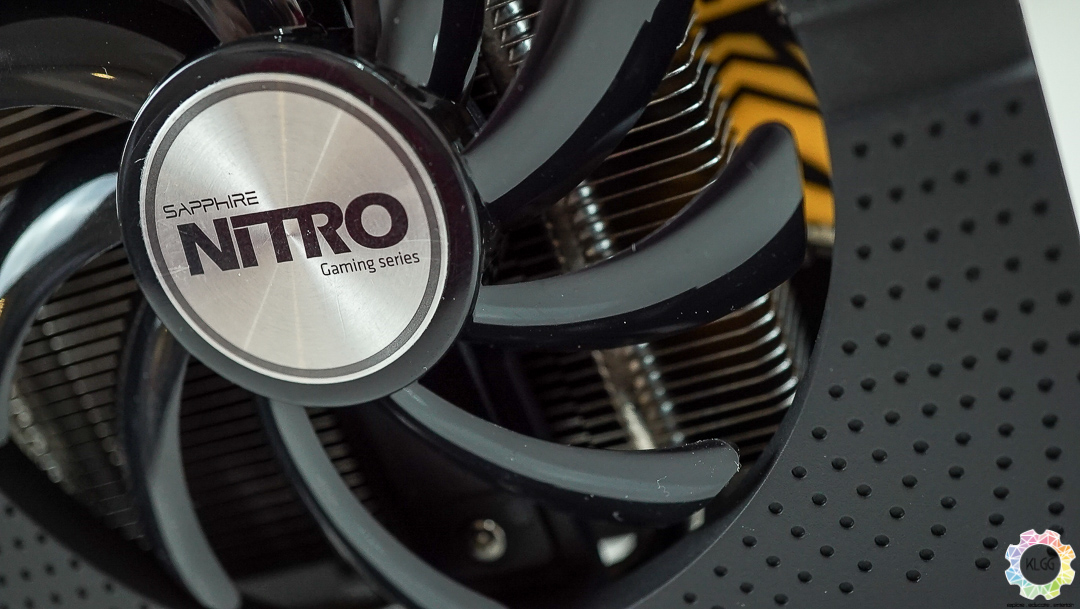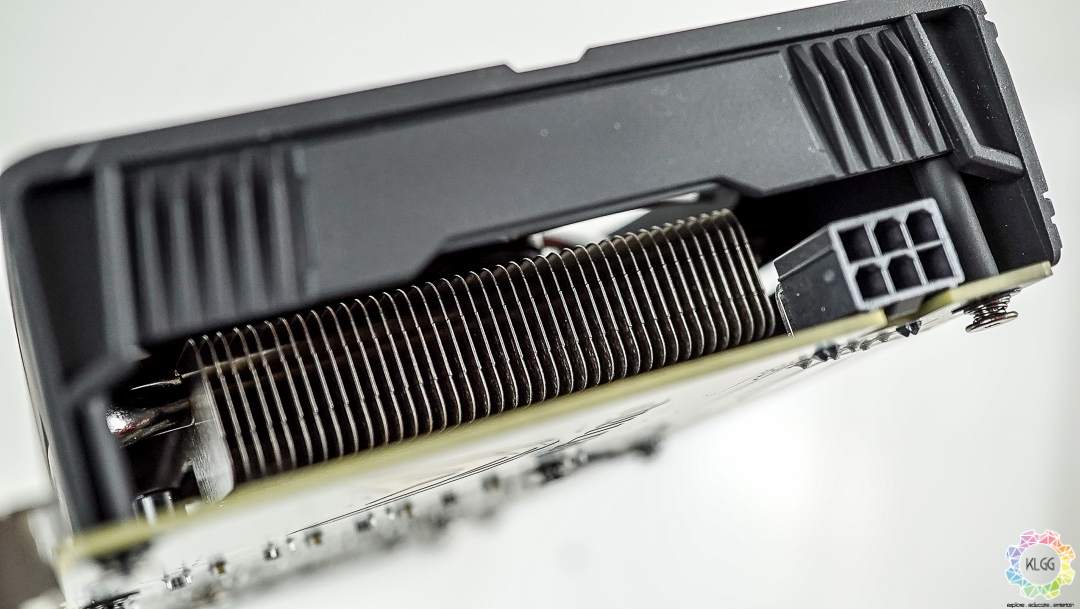Back at E3 when AMD announced the other cards in the RX 400 series, my curiosity was piqued by the RX 460. You see, with the RX 480 and RX 470, you pretty much had an idea as to what kind of performance both cards would have. For the RX 480, the card is an entry into the realms of VR; for the RX 470, it’s a card that is made for those who have their sights set on just 1080p gaming.
With the RX 460, things are slightly vague, with AMD stating that the card is tailor-made for E-Sports. Therein lies my fascination with the RX 460. Is it just a card that one gets for the express purpose of playing relatively low resource requirement games such as Dota 2? Or is the card meatier than what I was expecting. All these questions were answered as I managed to get my hands on Sapphire’s own 4GB version of the Nitro RX 460 OC graphics card, and I can safely say that the card performs far better than I was expecting.
Design and Hardware
This is no reference card of course. The Sapphire Nitro RX 460 OC is, obviously, an RX 460 that has went through the hands of Sapphire. The result of that is a card that comes with Sapphire’s own twin-fan Nitro cooler. Overall, barring the Sapphire branding located at the top of the card, and the yellow Nitro logo located at the back of the card, the Nitro RX 460 OC isn’t exactly the most fancy looking card available, which is fine by me.
For ports, the Nitro RX 460 OC comes with a single HDMI port, a single DisplayPort, and a single DVI port, allowing you to pick your poison when it comes to connecting the card to your monitor. The six-pin power connectors for the card is located at the front of the card.
Test Bench Hardware Specifications
Processor: Intel Core i5 6600
Motherboard: ASUS Z170-K
RAM: Kingston HyperX Fury 8GB DDR4-2666MHz x 2
Storage: Kingston HyperX Fury 240GB SSD. Seagate ST4000VN000 4TB
OS: Windows 10 Home
Graphics Driver: AMD Radeon Crimson 16.7.3
Casing: CoolerMaster N300
Sapphire Nitro RX 460 OC 4G Specifications
Where the RX 480 and RX 470 is built on Polaris 10, the RX 460 is built on Polaris 11. In terms of numbers, the RX 460 carries 14 compute units, 896 stream processors, 56 texture units and 16ROPs. This particular card comes with 4GB of GDDR5 memory, and has a peak performance rate of up to 2.2 TFLOPS.
As the OC designation implies, Sapphire has personally tuned the card to perform slightly better than the reference card. Where the reference card has a boost clock of up to 1200MHz, Sapphire has factory overclocked their version of the RX 460, making it run at 1250MHz instead.
Benchmarks
Before I get into the benchmarks, a quick disclaimer. For the RX 460, all our benchmarks will be done at 1920×1080 resolution. I won’t be testing the RX 460 on 2560×1440 resolution and above as the card ain’t powerful enough for that. With that said, let the numbers dump begin.
Synthetic Benchmarks
3DMark
Game Benchmarks
As the numbers show, the RX 460’s performs a lot better than I was expecting. Now granted, when you start maxing out all the games, the RX 460 won’t be able to do 60FPS smoothly. Then again, if you wanted that level of performance, you would be buying a much more powerful card in the first place.
Once again, Vulkan is a miracle worker for the RX 460, giving the card a very solid average FPS of 48 over the course of my tests. Dropping it to High settings, and the RX 460 can break the 60FPS mark with little problems.
Besides these games, I’ve also done some performance tests on less resource intensive games. While it is not shown in the graph above, games such as Dota 2, Counter-Strike: Global Offensive, Hearthstone and the likes are able to run above the 60FPS mark with all settings maxed out on the RX 460 with little problems.
Temperature and Power Consumption
So how hot does the RX 460 run? Well, thanks to Sapphire’s Nitro coolers, this particular version of the RX 460 doesn’t climb above the 80 degree celsius mark. The maximum temperature recording throughout my entire benchmarking session reads at around 75 degrees celsius. On idle, the card runs at around the 40 degree mark, while the average on-load temperatures hovers around the 70 degree zone. The fans on the graphics card did not generate too much noise either, which is a big plus for those who like their cards as quiet as possible.
On the power draw side of things, Sapphire’s Nitro RX 460 draws around 50W on idle. When it came time to benchmark, the maximum power draw I’ve saw was at 170W. Considering that this is a custom version of the RX 460, and factoring in that the card has been overclocked, this reading is pretty standard in my books.

